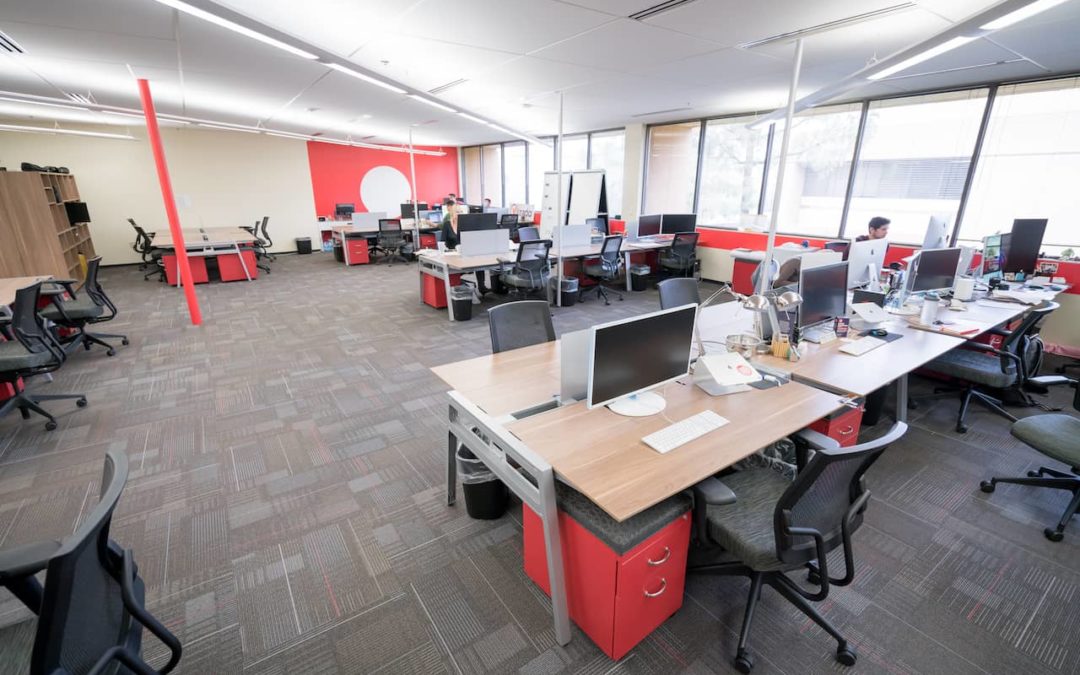As the workplace continues to evolve and welcome remote and hybrid setups, teams and companies are finding unique ways to adapt and stay productive. Collaborative workspaces have become more popular and are often confused with the likes of shared workspaces or individual workspaces.
In principle, they all mean people coming together in one place to get work done, but they differ in a few ways. This blog discusses what collaborative workspaces are and how they compare with the other unique office setups.
What is a Collaborative Workspace?
A collaborative workspace, also called a co-working space, is much like a regular office pre-pandemic. The company owns or leases the land or building where the office is located, and employees come and go to a space with fixed resources. Only the staff are able to access the space and equipment inside, and they can confidently leave their computers and files over long periods. It is termed “collaborative” because it is where people can converge to get updates, brainstorm, meet with high-profile customers, work on major projects, and do other tasks that require the attendance of several people.
Collaborative workspaces are suitable for teams that need a go-to office to exchange ideas or simply work side-by-side in an exclusive environment.
Open vs. Individual vs. Collaborative Workspaces
Understanding the differences among these workspaces can help your company maximize their benefits and manage costs. Let’s take a look at each one.
1. Open Workspace
A communal work environment is what an open workspace is all about. You’ll see several tables and chairs in an open plan setting which are free for anybody to occupy at any given time. An individual visits an open workspace, pays by the hour or by the day and sits anywhere they might want to get work done. They bring their equipment and materials with them when they come and leave. This type of environment is ideal for individuals or a few members of a team who just want to get out of the work-at-home setting in favor of a new atmosphere.
2. Individual Workspace
Individual workspaces are slightly similar to open workspace locations, only here the employee can have a designated area to use on an as-needed or ongoing basis. This could be a space separated by a cubicle or a wall in a shared location. The employee can rent this area for the day, week, the month, or longer, depending on the requirement. This setup is ideal for employees who do not want to take their work home but do not have an official “office” to go to in their location. It works best for remote staff or independent contractors.
3. Collaborative Workspace
As mentioned above, a collaborative workspace is a fixed location where staff can come and go. An alternative to having a brick-and-mortar office, companies can rent a collaborative workspace within a location that also offers open-plan seating. This means that employees in the same area can decide to come to the “office” on a certain day to work side-by-side but then be greeted by people in individual and open setups the moment they step out of their exclusive space.
Companies like MAC6 offer a suite of options for individuals, startups, and large teams who might be interested in open, individual, or collaborative workspaces in Tempe, Arizona. To make the environment more inspiring and fun to work in, they even provide access to a pantry that offers unlimited coffee, mineral water, and maybe even snacks. On some occasions, social and learning events are conducted, which are open for anybody who wants to join.
Do Collaborative Workspaces Work?
That depends on your team needs, though many startups and growing businesses are preferring this setup as it simulates an office environment that inspires productivity and boosts morale but without the hefty overhead and maintenance costs. In addition, co-working spaces offer the work-life balance that can be challenging to achieve in a work-at-home setting. Fatigue and burnout can happen quickly for an employee who only has their own home in view 24 hours a day. Co-working spaces provide respite from such restrictive environments and can actually inspire someone to work better, happier, and faster.
How MAC6 Can Help Your Team Collaborate
MAC6 provides a plethora of co-working options for individuals and companies of any size. Single users can take advantage of coworking desks, co-working office combos, private offices, and private suites that can accommodate as many as 80 people. We also provide address and mail services via virtual offices. For those who have much larger space requirements to hold both people and equipment, MAC6 has a flexible warehouse space that you can use according to your requirements.
Contact MAC6 today to book a tour of the facilities.

